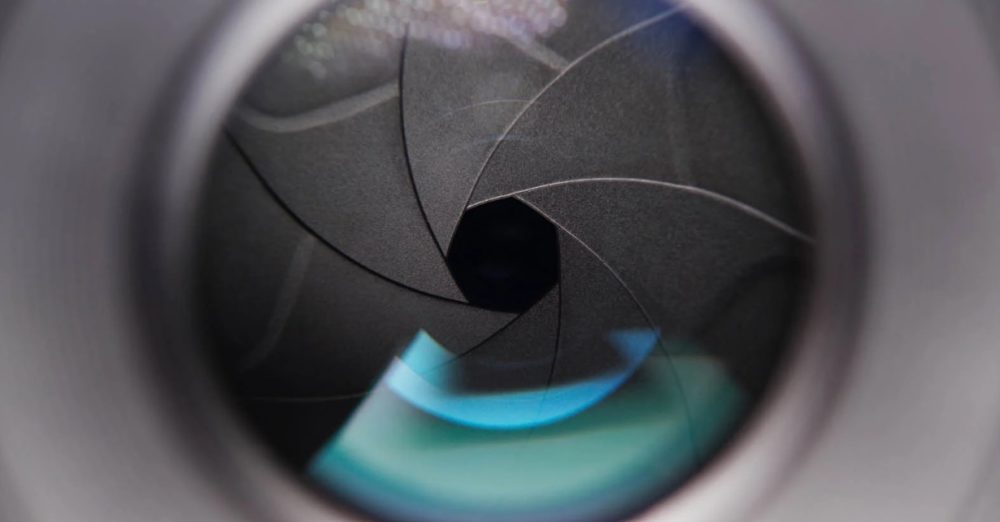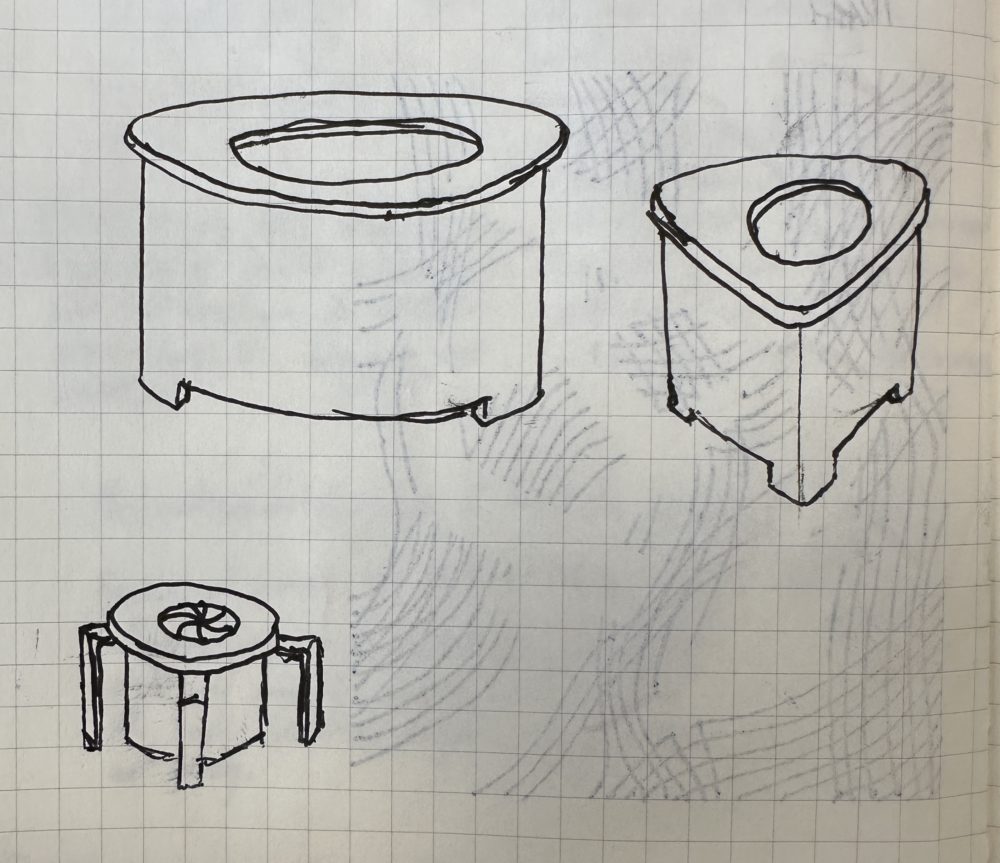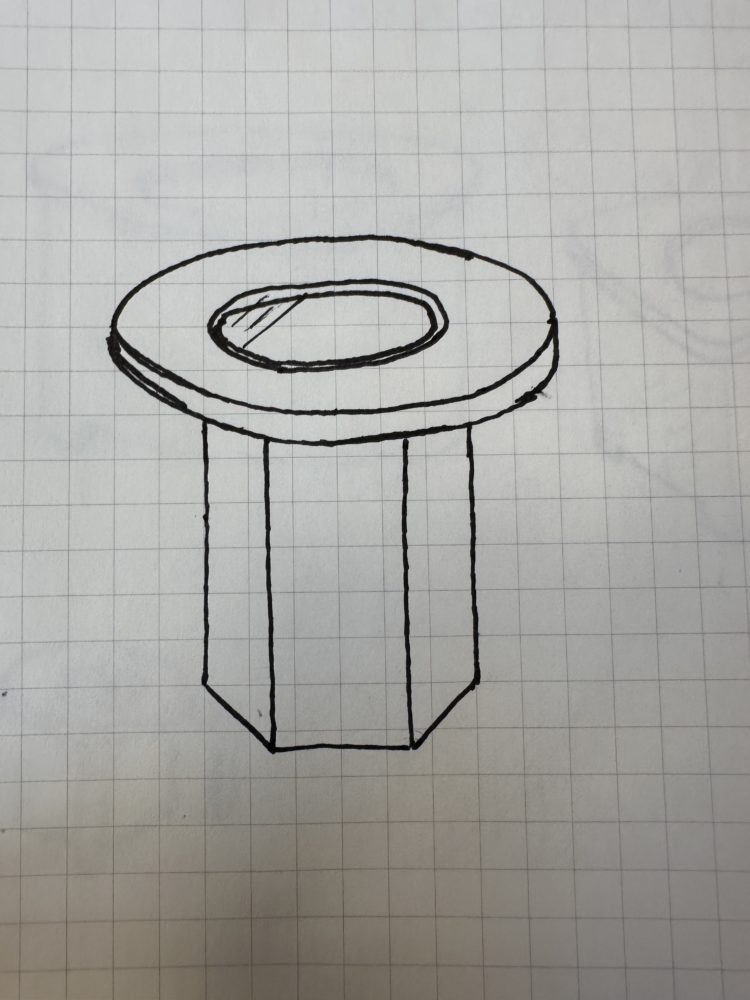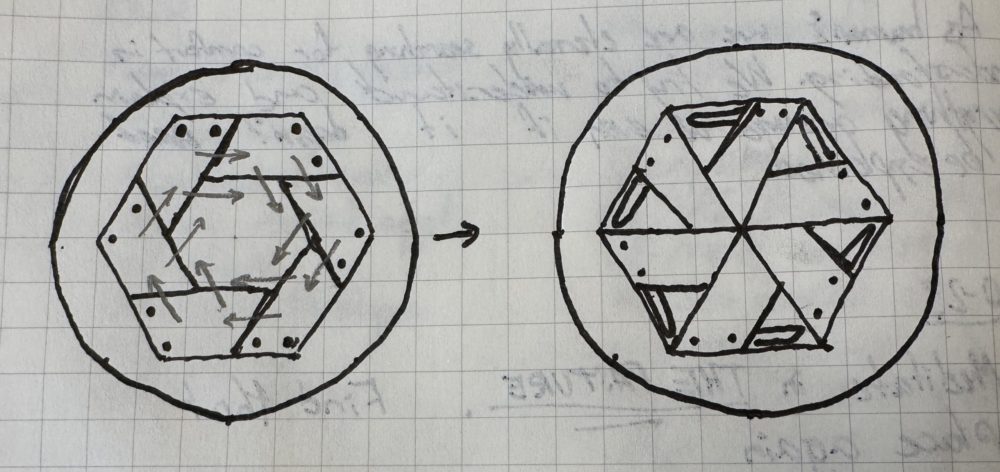Inspirations:
The inspiration for my design came largely from the circular motion of a camera aperture. What opens and closes a camera aperture is called an iris mechanism, and this is something that I wanted to incorporate into my design. An iris mechanism works by having blades arranged in a circular pattern that move together in unison in order to open or close a central space.

Another thing that inspired me was unique table designs done by Lotus Woodworks and other designers that create round tables with unique functions, such as the ability to expand into a larger round table. I found this creative design very inspiring, and it made me want to make a table of my own.

Vision and Process:
My vision going into this project was to create a cool side table with a mechanical complication that made it more interesting to look at while also providing an aspect of functionality. To do this, I’m creating a round table with an iris mechanism in the middle. The iris mechanism will be visible through a piece of glass, and when it’s fully opened, will reveal lighting underneath. I sketched several designs during my creative process before settling on a final design for the look of the table.


I’m using a hexagonal base for ease of manufacturing, and using the round table top for the sleek and polished look that I desire. For my iris mechanism, I figured out that instead of using contoured and overlapping blades like a camera aperture, I can use 6 trapezoids that move in unison to produce the same effect, while being much easier to design, manufacture, and install.

Fabrication:
The fabrication of this project will be largely using saws. The circular layers (mentioned in the video) will be cut out using a band saw, and the interior circle will be cut using a jigsaw. Once the layers are complete, I’m going to use a router to add the necessary slots for the blades to slide in. The blades will be cut using a table saw and miter saw, then holes will be drilled for the pins. The pins will be made of threaded rods with collars on them. These pins will slide in the slots, and once inserted, all of the layers will be glued together.
Materials:
A majority of this build is going to be wood, both in planks (for the base), and sheets (for the top). Other materials are going to be wood glue, threaded rods and collars, a glass disc, LED strip, and wood stain.
Timeline:
A rough timeline of the work that I’ve done and the work I still need to do looks about like this:
-Sketch out designs and decide on features to include
-Figure out materials and how to fabricate and cut them in necessary way
-Create CAD drawing/in depth blueprints for fabrication
-Create a small scale proof of concept using cheaper materials (where I am now)
-Purchase materials for full scale build
-Build full scale artifact
-Completed, April 26
Sources:
“Expanding Round Table.” Lotus Woodworks, 9 Mar. 2023, https://lotuswoodworks.com/.
Hein, Justin. “Aperture in Photography: A Complete Guide.” PetaPixel, 9 Nov. 2022, https://petapixel.com/what-is-aperture-in-photography/.

1 Comment. Leave new
I found the Iris Mechanism Table to be fascinating. I was particularly interested in the inspiration behind the design, which came from the circular motion of a camera aperture and unique table designs. The incorporation of an iris mechanism into a table design is a novel concept, and I was impressed with the level of detail that Jonah provided regarding the fabrication process, materials, and timeline.